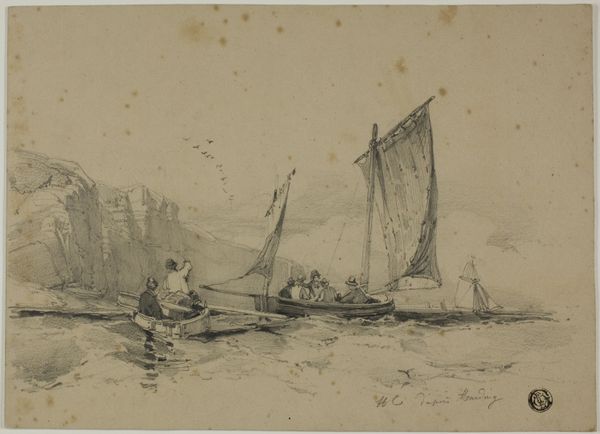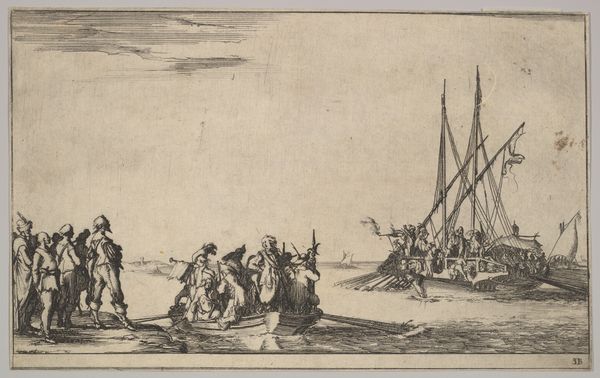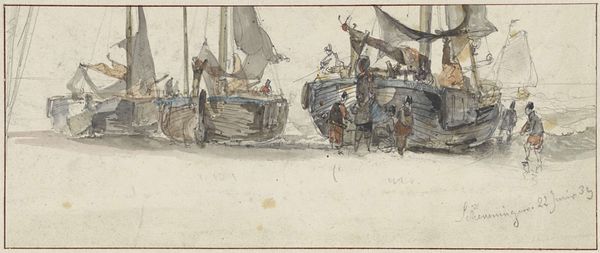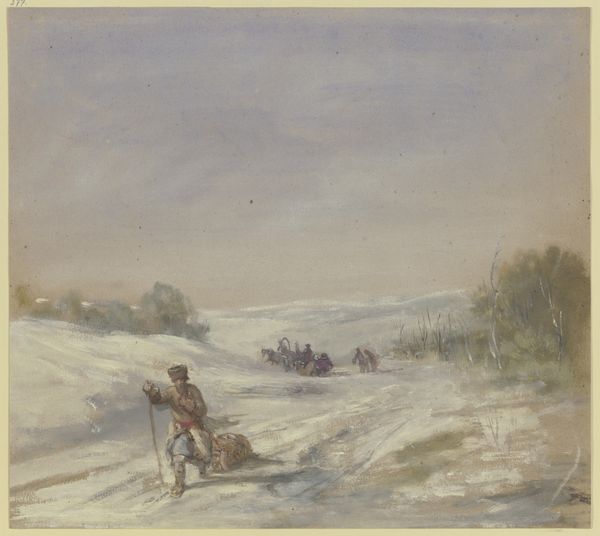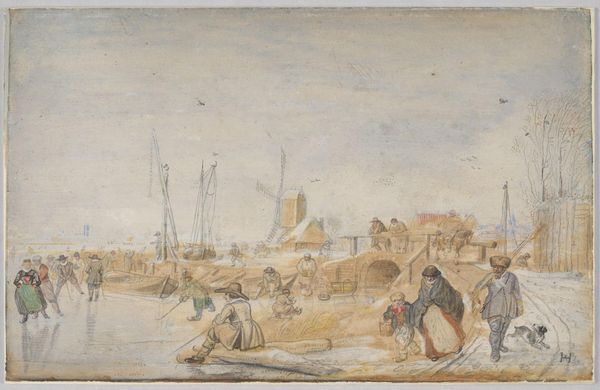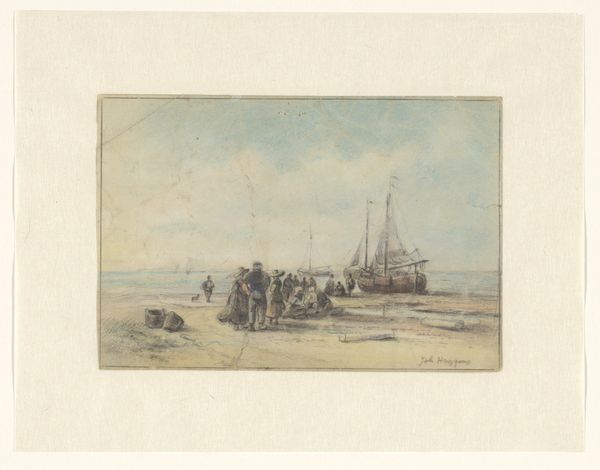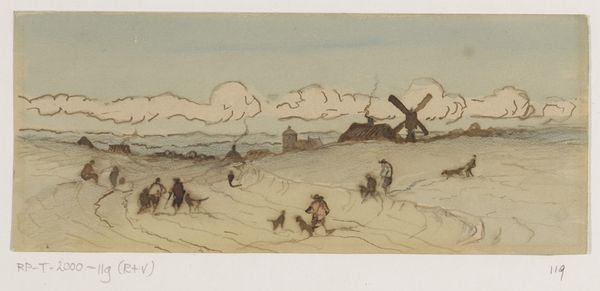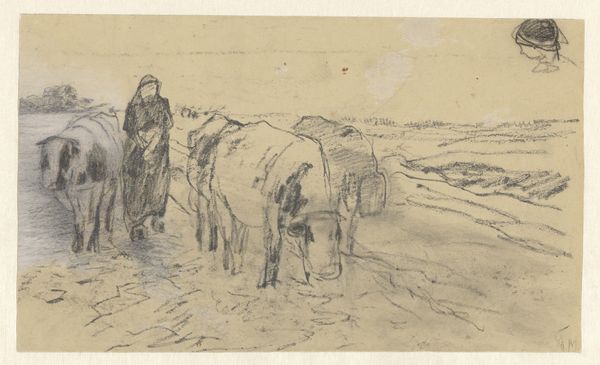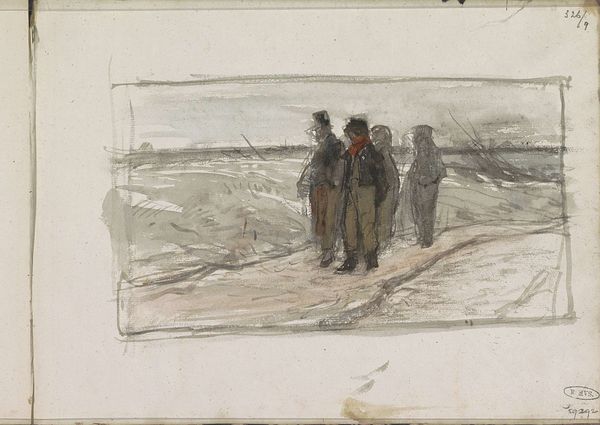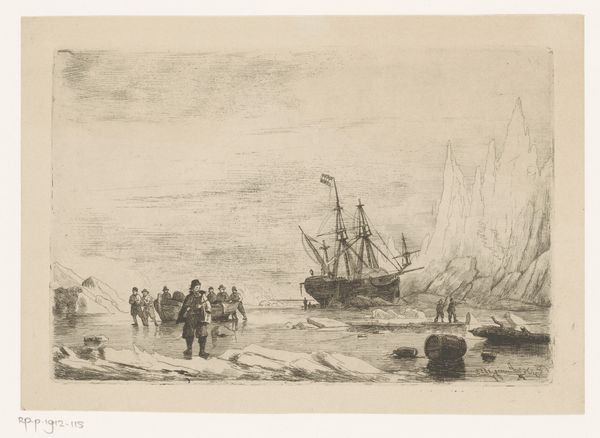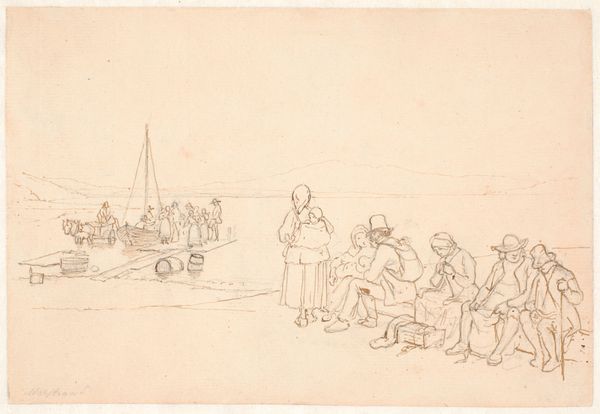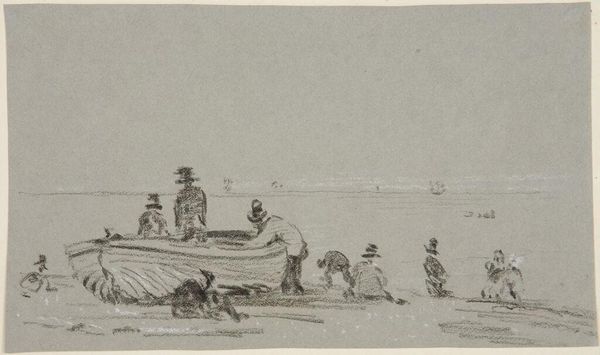
Dimensions: Sheet: 7 1/4 x 9 1/4 in. (18.4 x 23.5 cm)
Copyright: Public Domain
Editor: We're looking at Eugène Boudin's "Fishermen's Wives," likely created between 1850 and 1865, rendered in watercolor, pen, and graphite. I’m struck by how spare and quiet the scene feels. Almost… bleached by the sun. It feels like more than just a scene of everyday life on the beach, and I wonder if there is more to it. What do you see here? Curator: That quietude really speaks to me, too. It’s interesting you call it bleached because I sense something more substantial in its stillness. Boudin's sketches, particularly his beach scenes, possess this haunting premonition; these figures stand in a seemingly casual formation on the sand, perhaps awaiting a boat’s return. Look closely. How do their bodies sit? Are they really as casual as they seem? Editor: I guess not… now that you point it out, there’s a gravity there I missed at first glance. They almost seem frozen or on pause. I am not really sensing a “bright” day either. It feels grey and muted overall. Curator: Exactly. This is where Boudin masterfully walks the line between observed reality and… dare I say, felt experience? Consider that muted palette—it reflects the damp climate he experienced in Normandy but is it also hinting at something less tangible, an underlying vulnerability connected to lives intrinsically connected to the sea’s whims? There’s the feeling of shared experience and emotion, despite each woman being alone. What do you think? Editor: Hmmm... It's like their shared anticipation or worry has become a tangible element of the scene itself. Thanks for helping me slow down. Curator: My pleasure! Boudin understood how to communicate atmosphere, not just visually, but emotionally as well. It's a talent to which words and brushes only begin to give justice.
Comments
No comments
Be the first to comment and join the conversation on the ultimate creative platform.

